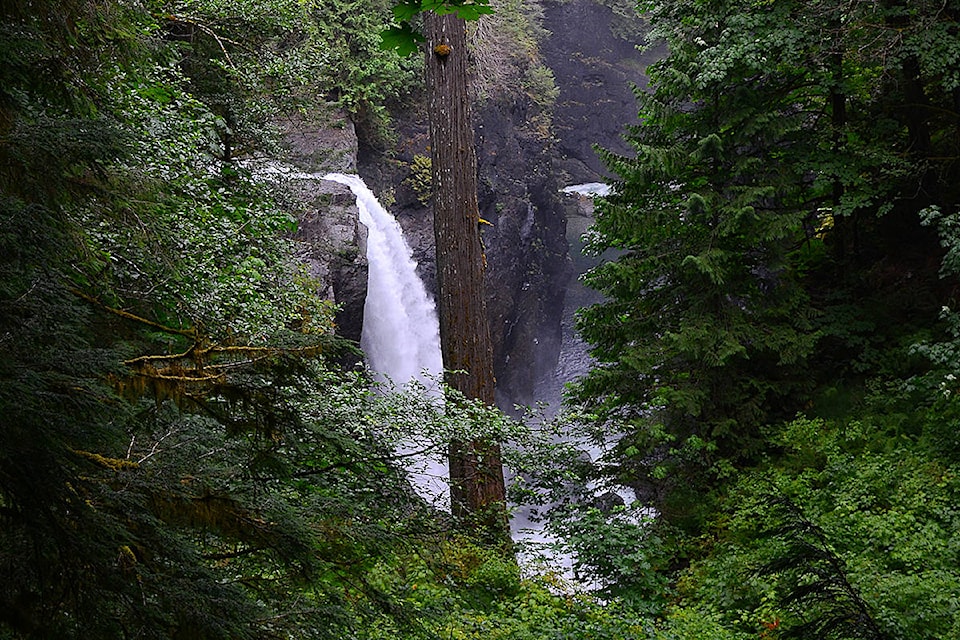After a stable summer on the Campbell River system, BC Hydro will begin alternating the flow of water next week to accommodate salmon runs.
“We’ve come through a good spring and summer for water abundance,” BC Hydro’s Stephen Watson says. “It was nice to have the reservoir levels and the Campbell River flows in the preferred zones this summer. The spring snowpack certainly provided for that water abundance.”
But now it’s the time to keep an eye on seasonal fish passage flows down the Elk Falls Canyon. BC Hydro will provide nine, 48-hour pulse flows down the canyon on the Campbell River system to benefit migrating salmon. Elk Falls is a natural barrier to fish passage, though there is good habitat between the generating station and the falls.
This year the first migration flow will happen this Tuesday and Wednesday and then on those same days of the week for eight more weeks ending Nov. 14. Flows in the canyon will increase from about four cubic metres per second (m3/s) to seven m3/s. BC Hydro will not be reducing flows out of the John Hart generating station during the fish migration flows so a very slight increase in water flows may be measureable downstream. On Oct. 2-6, due to maintenance, the canyon flow rate will be 20 m3/s. At this flow rate, the Elk Falls suspension bridge views may be an attraction for people.
BC Hydro advises the public to stay away from the Campbell River upstream of Elk Falls while higher flow rates are taking place. Safety warning signage will be in place.
As the region prepare for the fall rains and having the reservoir levels in the right position, along with spawning salmon considerations, Hydro will follow its water licence by increasing the Campbell River flow from 40 m3/s to about 100 m3/s on Sept. 21.
